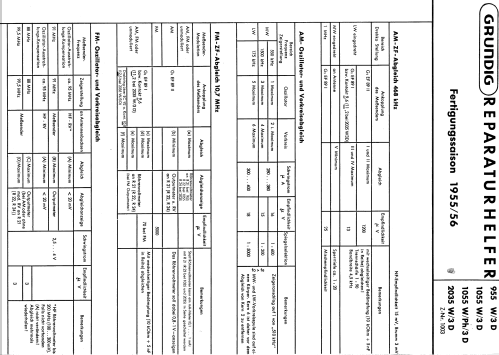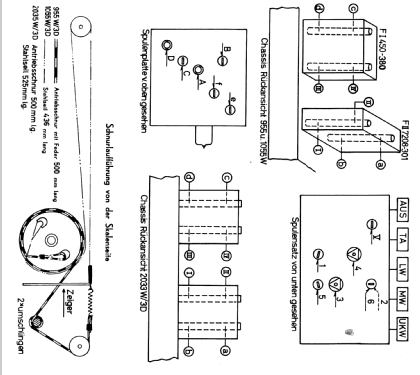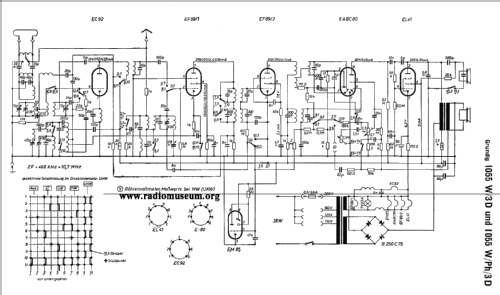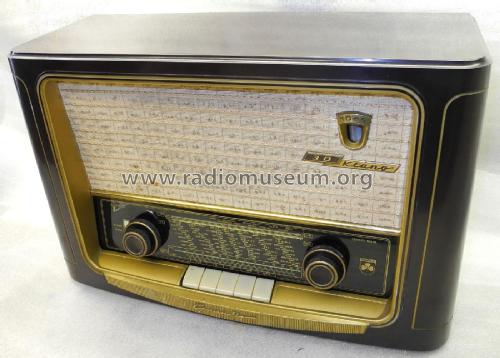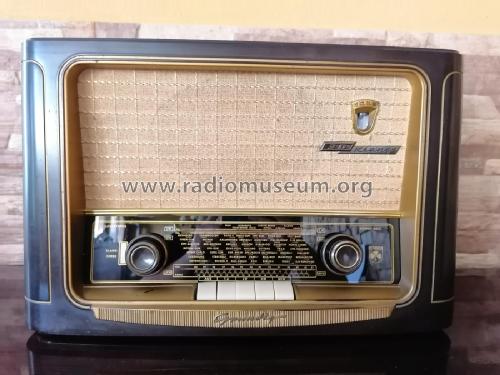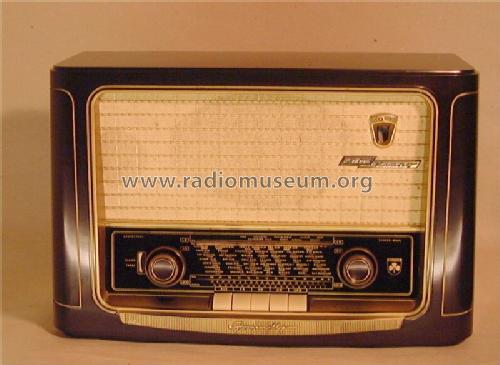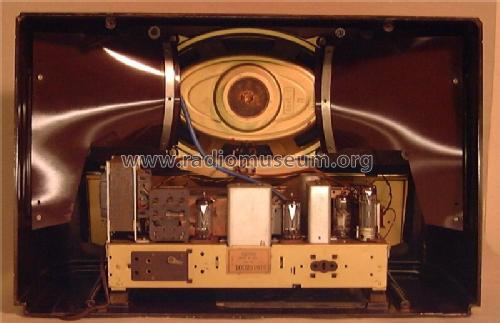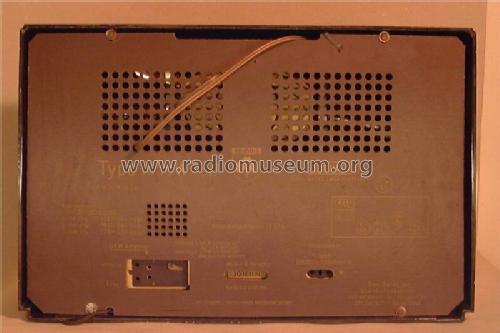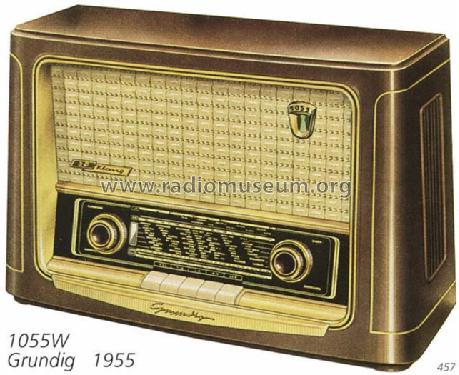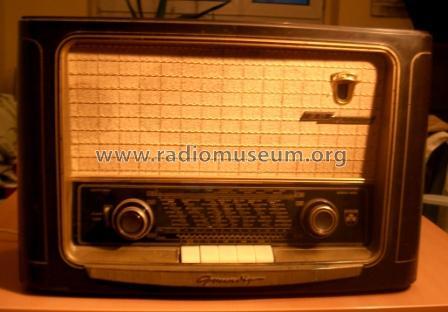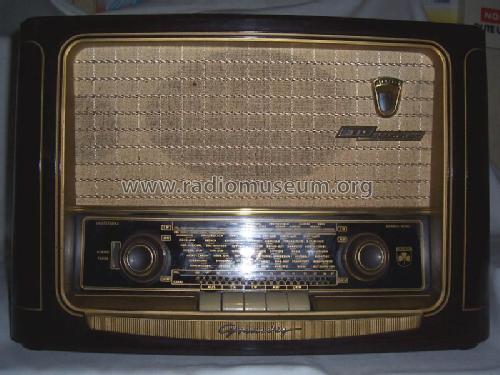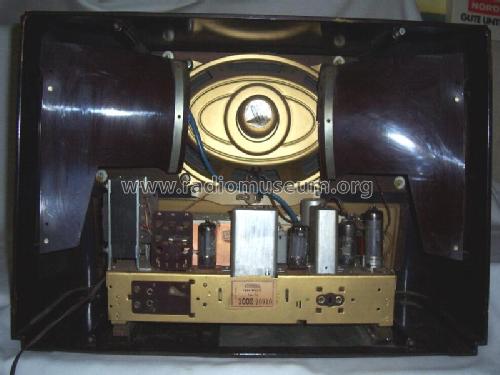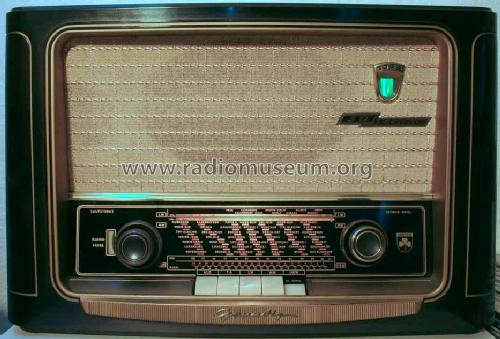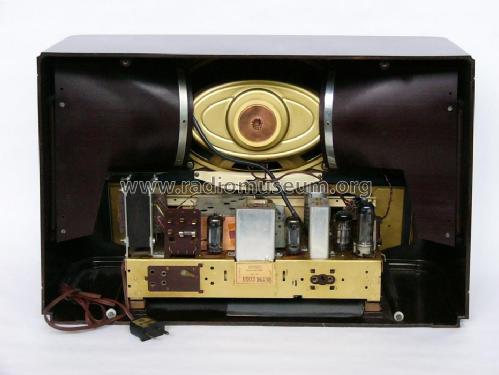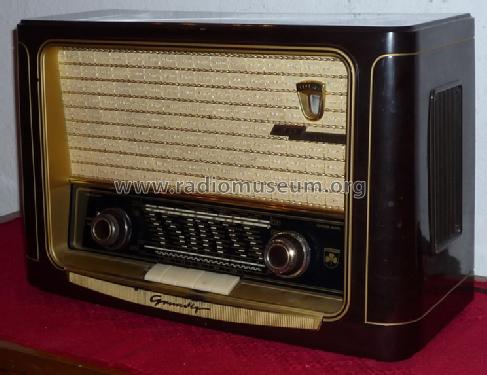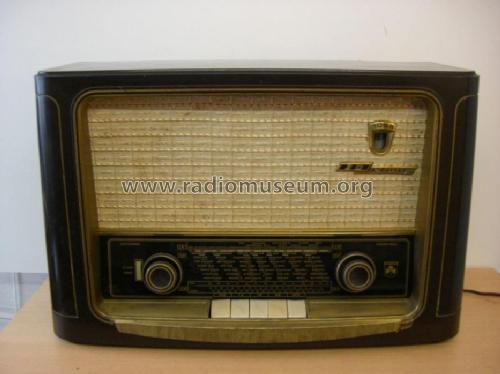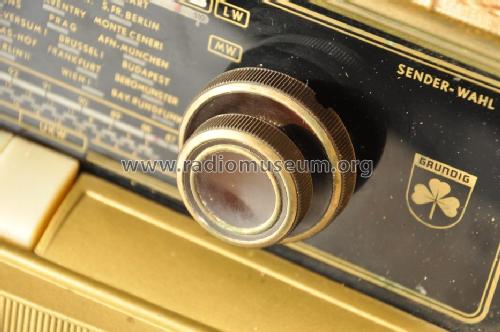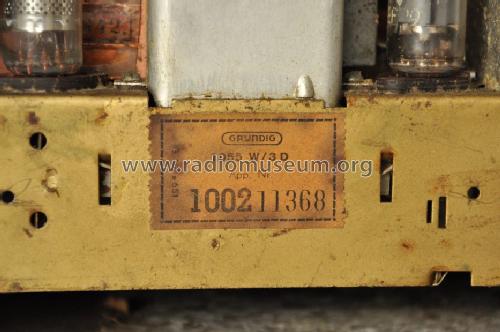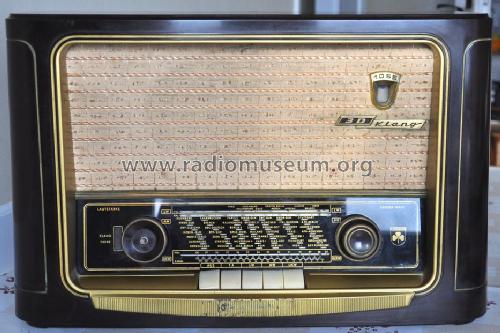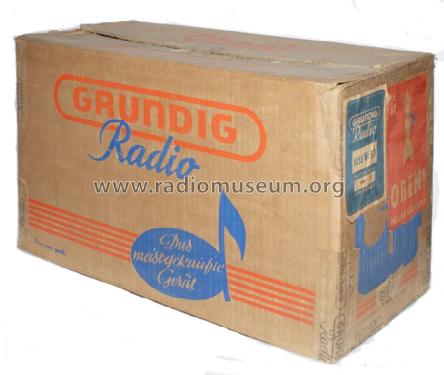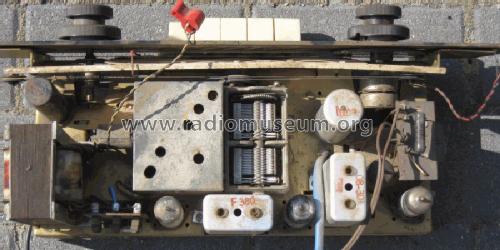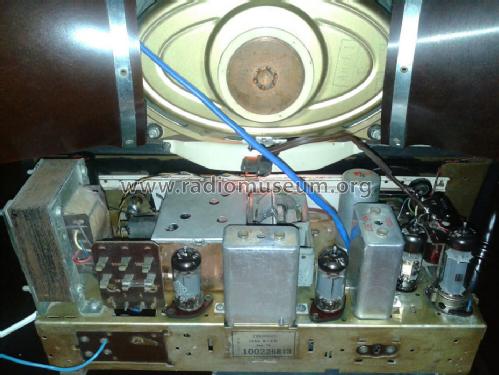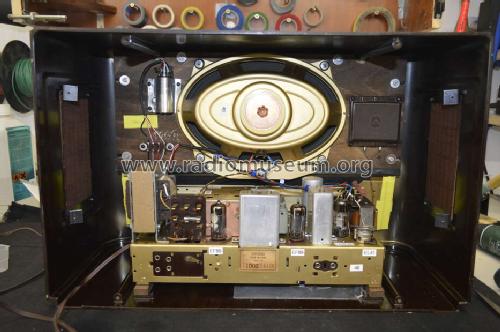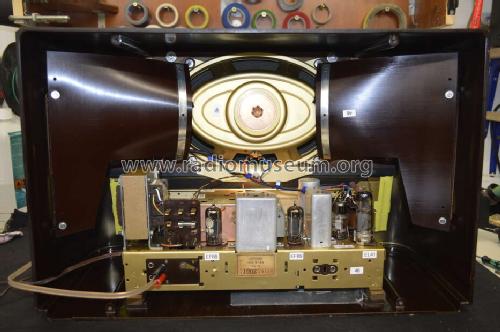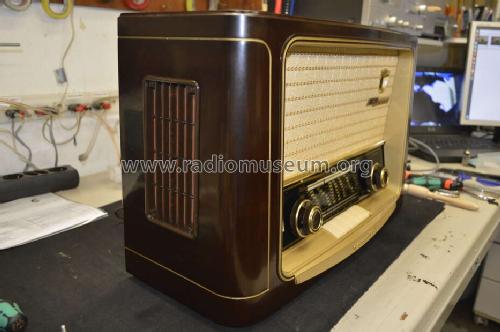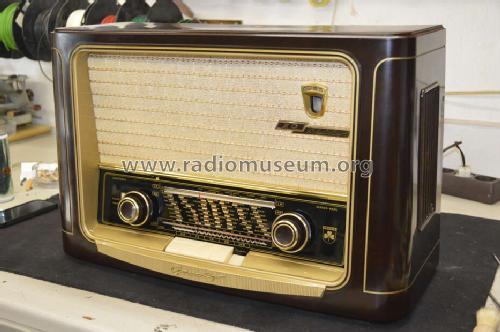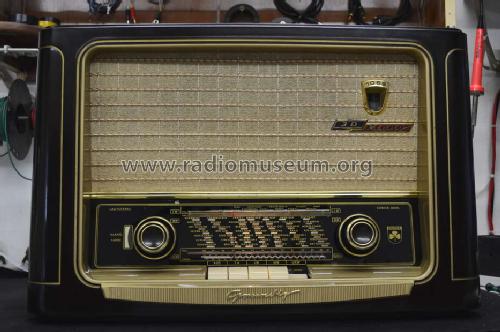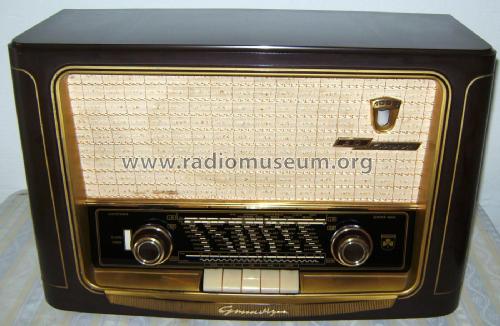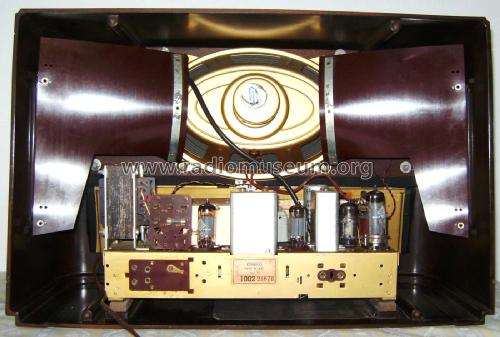- Hersteller / Marke
- Grundig (Radio-Vertrieb, RVF, Radiowerke)
- Jahr
- 1955/1956
- Kategorie
- Rundfunkempfänger (Radio - oder Tuner nach WW2)
- Radiomuseum.org ID
- 2078
-
- anderer Name: Grundig Portugal || Grundig USA / Lextronix
Klicken Sie auf den Schaltplanausschnitt, um diesen kostenlos als Dokument anzufordern.
- Anzahl Röhren
- 6
- Hauptprinzip
- Superhet allgemein; ZF/IF 468/10700 kHz
- Anzahl Kreise
- 6 Kreis(e) AM 8 Kreis(e) FM
- Wellenbereiche
- Langwelle, Mittelwelle und UKW (FM).
- Betriebsart / Volt
- Wechselstromspeisung / 110; 125; 160; 220 Volt
- Lautsprecher
- 2 Lautsprecher
- Belastbarkeit / Leistung
- 3 W (Qualität unbekannt)
- Material
- Bakelit (Pressstoff)
- von Radiomuseum.org
- Modell: 1055W/3D - Grundig Radio-Vertrieb, RVF,
- Form
- Tischgerät, Tasten oder Druckknöpfe.
- Abmessungen (BHT)
- 525 x 335 x 220 mm / 20.7 x 13.2 x 8.7 inch
- Bemerkung
-
Grundig 1055W/3D verwendet auch bei AM additive Mischung. Siehe auch die Exportversion Majestic 1055 USA mit abweichender Röhrenbestückung und multiplikativer AM-Mischung (ECH81).
Laut Angabe auf der Rückwand besitzt das Modell 10 FM- und 7 AM-Kreise. Tatsächlich sind gemäss üblicher Zählweise (ohne Sperr- bzw. Saugkreise) laut Schema nur 8 FM- und 6 AM-Kreise vorhanden.
- Nettogewicht
- 6.6 kg / 14 lb 8.6 oz (14.537 lb)
- Originalpreis
- 226.00 DM
- Datenherkunft
- HdB d.Rdf-& Ferns-GrH 1955/56 / Radiokatalog Band 1, Ernst Erb
- Literatur/Schema (1)
- -- Original-techn. papers.
- Bildnachweis
- Das Modell ist im «Radiokatalog» (Erb) abgebildet.
- Weitere Modelle
-
Hier finden Sie 6196 Modelle, davon 5420 mit Bildern und 4191 mit Schaltbildern.
Alle gelisteten Radios usw. von Grundig (Radio-Vertrieb, RVF, Radiowerke)
Sammlungen
Das Modell befindet sich in den Sammlungen folgender Mitglieder.
Forumsbeiträge zum Modell: Grundig Radio-: 1055W/3D
Threads: 1 | Posts: 5
Forum Friends,
I have a minor question about the designation of the mixing process in the MW and LW bands of the Grundig 1055. The RF signal is applied to the control grid of EF89 pentode mixer, and the local oscillator voltage from the EC92 Local Oscillator triode drives the cathode of the EF89 pentode mixer.
This process was described as additive mixing in this thread.
This thread is in German, I used Google-Translate to read it.
My informal understanding of additive mixing means that the RF signal and local oscillator are linearly added together before being applied to the non-linear mixing device. This is the case in this radio in the FM band, with the self-oscillating EC92 triode converter.
It seems to me that this Radio uses multiplicative mixing in the MW and LW bands, but I am not sure about my understanding of the additive-vs.-multiplicative nomenclature.
Best regards,
-Joe
Joe Sousa, 15.Jun.09

